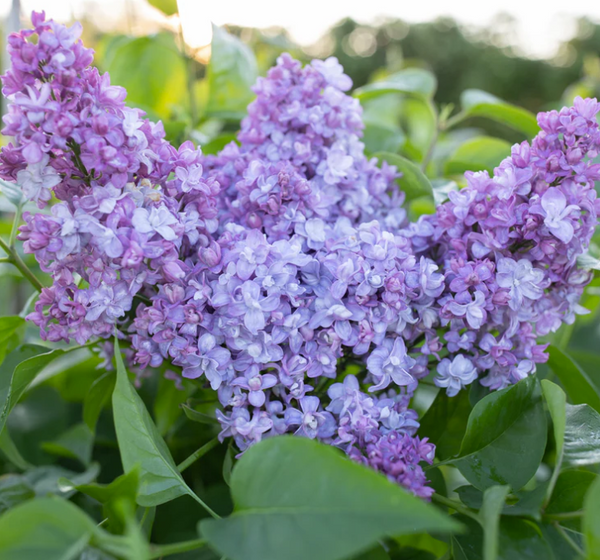Syringa vulgaris - NADEZHDA
Shipping calculated at checkout
34 in stock
Need more? Contact us
Available only in spring 2026
🌸 General description
- Botanical name: Syringa vulgaris ‘Nadezhda’
- Common name: Common lilac ‘Nadezhda’ (the word Nadezhda means Hope in Russian 🇷🇺).
- Creator: Selected by Leonid A. Kolesnikov, a famous Russian hybridizer, in 1974.
- Origin: Russia.
- Family: Oleaceae.
- Type: Deciduous shrub.
🌿 Characteristics
- Mature height: 8.5 to 11.5 ft.
- Spread: 6.5 to 9 ft.
- Habit: Upright and rounded, dense.
- Foliage: Bright green, cordate (heart-shaped), turning yellow in fall.
- Growth: Medium to fast.
- Hardiness: Excellent (down to -34°F and below).
🌼 Flowering
- Period: May to early June (depending on the region).
- Flowers:
- Double, very full, with delicately overlapping petals.
- Color: Lavender blue to pale mauve blue, with slightly pink highlights in the center—a rare shade in lilacs.
- Arrangement: Large, upright, dense panicles, measuring 20 to 25 cm long.
- Fragrance: Very sweet, floral and captivating.
- Interest: Exceptional for its abundant flowering and bluish hue, which is uncommon in Syringa vulgaris.
🌞 Growing conditions
- Exposure: Full sun (best flowering) or light partial shade.
- Soil:
- Prefers rich, cool, well-drained soil.
- Tolerates limestone but does not like overly acidic or waterlogged soil.
- Watering: Moderate; water regularly during the first few years after planting.
- Care:
- Prune immediately after flowering (remove dead flowers).
- Remove suckers if they become invasive.
- Mulching helps keep the soil cool.
🌷 Uses in the garden
- On its own, to show off its double, fragrant flowers.
- In shrub beds or flowering hedges.
- Near a passageway or window, to enjoy its fragrance.
- Very suitable for bouquets (long-lasting flowers in vases).
💡 Did you know?
The ‘Nadezhda’ lilac is one of Kolesnikov's most famous creations. He sought to obtain lilacs with true “blue” tones—a rare color that is difficult to stabilize in the Syringa genus.
Its symbolic name, Nadezhda (“Hope”), evokes optimism and the rebirth of beauty in spring.


